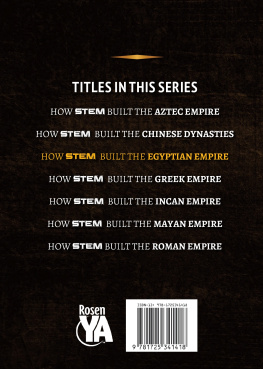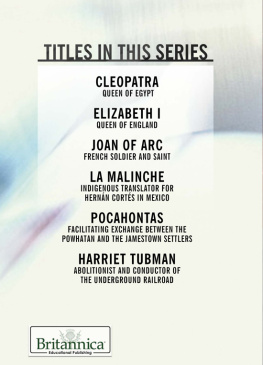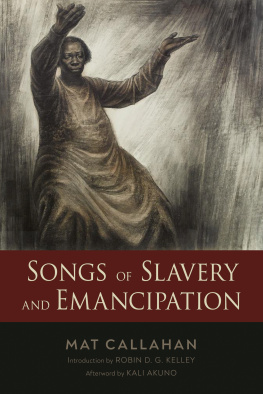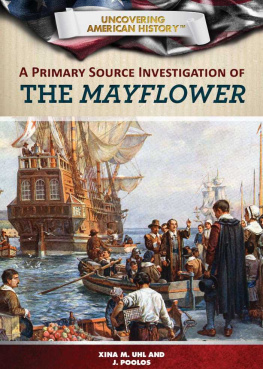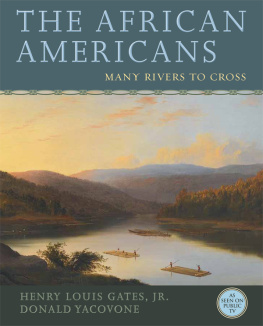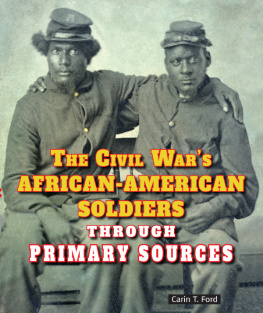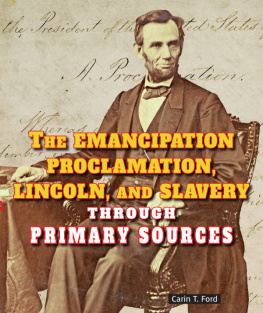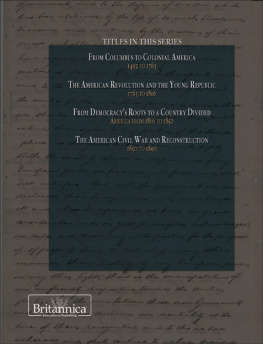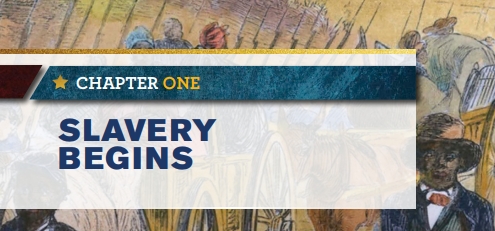- Chapter 1
SLAVERY BEGINS - Chapter 2
THE SLAVE TRADE - Chapter 3
ENSLAVED LIFE - Chapter 4
FORMS OF RESISTANCE - Chapter 5
ABOLITIONISTS MAKE THEIR VOICES HEARD - Chapter 6
SLAVERY ENDS
Published in 2019 by The Rosen Publishing Group, Inc.
29 East 21st Street, New York, NY 10010
Copyright 2019 by The Rosen Publishing Group, Inc.
First Edition
All rights reserved. No part of this book may be reproduced in any form without permission in writing from the publisher, except by a reviewer.
Library of Congress Cataloging-in-Publication Data
Names: Uhl, Xina M., author. | Buell, Tonya, author.
Title: A primary source investigation of slavery / Xina M. Uhl and Tonya Buell.
Description: First edition. | New York : Rosen Central, 2019 | Series: Uncovering American history | Includes bibliographical references and index. | Audience: Grades 5-8.
Identifiers: LCCN 2018008336| ISBN 9781508184096 (library bound) | ISBN 9781508184089 (pbk.)
Subjects: LCSH: SlaveryUnited StatesHistoryJuvenile literature. | Antislavery movementsUnited StatesHistory19th centuryJuvenile literature. | African AmericansHistoryTo 1863Juvenile literature. Classification: LCC E441 .U43 2019 | DDC 306.3/620973dc23 LC record available at https://lccn.loc.gov/2018008336
Manufactured in the United States of America
On the cover: This 1831 hand-colored antique glass lantern slide shows Abraham Lincoln (front left) witnessing a slave auction.
Chapter 1
SLAVERY BEGINS
Chapter 2
THE SLAVE TRADE
Chapter 3
ENSLAVED LIFE
Chapter 4
FORMS OF RESISTANCE
Chapter 5
ABOLITIONISTS MAKE THEIR VOICES HEARD
Chapter 6
SLAVERY ENDS
F or millions of Africans, being captured and chained as slaves started a long, difficult, and sometimes deadly journey halfway across the world to an unfamiliar landAmerica. The hardships they endured so far continued as they were sold to the highest bidder and forced to labor for long hours every day for masters who treated them like lesser beings because of the color of their skin and their status in the terrible institution of slavery.
Two in-demand cropssugar and cottonrequired large numbers of laborers, and the landowners wanted that labor as cheap as possible. The purchase of African enslaved people was a one-time investment, unlike that necessary to keep paid workers. These landowners allocated little to provide their slaves with shelter and clothing. For this, they expected backbreaking labor and unquestioning obedience. Many slave owners split up families, punished individuals harshly when they did not conform to expectations, and pushed legislation that kept the cruel institution alive and well.

Enslaved people resisted when they could and sometimes braved death and grave injury to escape. Slave owners feared revolts of enslaved people most of all, though they happened infrequently. Individual slaves went so far as to petition state governments for assistance. One example is the enslaved woman Belinda, from Colonial America, who sought a pension from her master. She told the lawmakers that since she had been denied payment by her condition of servitude, she now requested a pension for her and her disabled daughter to save her "misery in the greatest extreme, and scatter comfort over the short and downward path of their lives." History does not record the result of Belinda's petition.
The forces opposed to slavery grew over time. Courageous abolitionists like Harriet Tubman and Frederick Douglass spoke passionately about their experiences with the evils of slavery. Writers such as Olaudah Equiano and Harriet Beecher Stowe wrote popular books that called on society to outlaw human bondage. The voices of other abolitionists, like that of John Brown, became louder and their demands for an end to this inhumane institution reached a fever pitch.
The issue of slavery divided the free North from the slave South. Decades of compromises between factions in the North and South held off civil war for years. Inevitably, though, it erupted with the election of the antislavery politician Abraham Lincoln as president.
Though slavery is a shameful part of the United States's past, it is important to examine the documents, art, and artifacts of the time to understand how it came to be accepted by some and tolerated by others and to honor the lives and experiences of those who endured being considered little more than private property. The institution of slavery was legal and accepted by church and state alike, and it took untold suffering and death by enslaved people themselves and the soldiers who fought and died by the thousands to bring an end to this injustice.
The history of slavery does not define the lives of black people in modern times, but the legacy of discrimination, segregation, and poverty that grew out of itand spawned the civil rights movement of the twentieth century and beyondcontinues to affect many Americans.
Only by identifying the beliefs, practices, and institutions that created it can a full understanding of this difficult human experience be comprehended.
T he roots of slavery sunk into American soil for several reasons. The most important was the need for people to perform labor inexpensively. Fresh from Europe, many property owners and others believed that a lower class of people should exist to serve them. Black people were looked down upon by many Europeans. Over time, great numbers of enslaved Africans were taken to America to work, often on huge plantations common in the South, and the culture of slavery led many to believe that it was a necessary evil.
MUCH WORK TO BE DONE
When the first Europeans arrived in Jamestown in 1607, they began to develop the area and build towns and cities. Many of these colonists had been accustomed to hiring servants to farm their land and keep their houses, and they looked for the same type of cheap, reliable labor in the New World.
Initially, the American settlers hired white indentured servants from Europe. These servants would hire themselves out for a term of seven years, in exchange for a salary and passage to the New World. This form of labor did not work for several reasons. The pay, though quite low, was too high for the colonists to afford and still make a profit on their farms. In addition, there were not enough people in Europe who were willing to come all the way to a new land and work for seven years for the small amount of money that was offered. There was a great need for farm laborers and domestic servants, yet there were very few people willing to do the job.
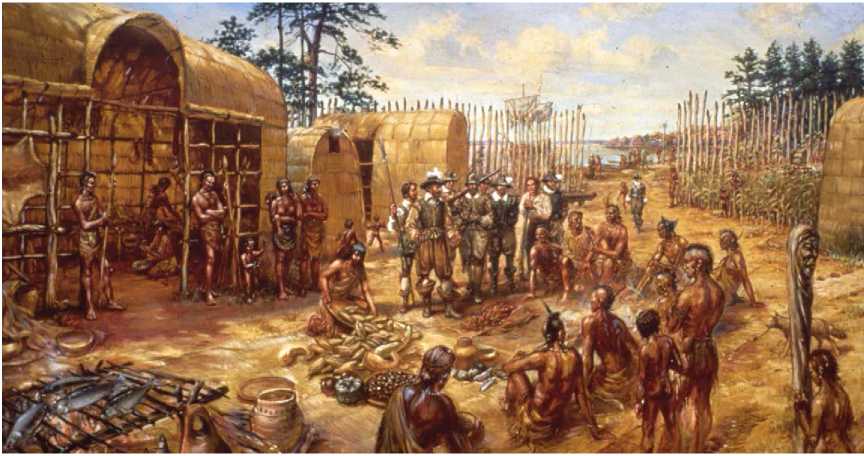
Between building and farming, settlers in Jamestown were faced with a heavy workload in their new home. Native American allies helped them cultivate crops at first.


